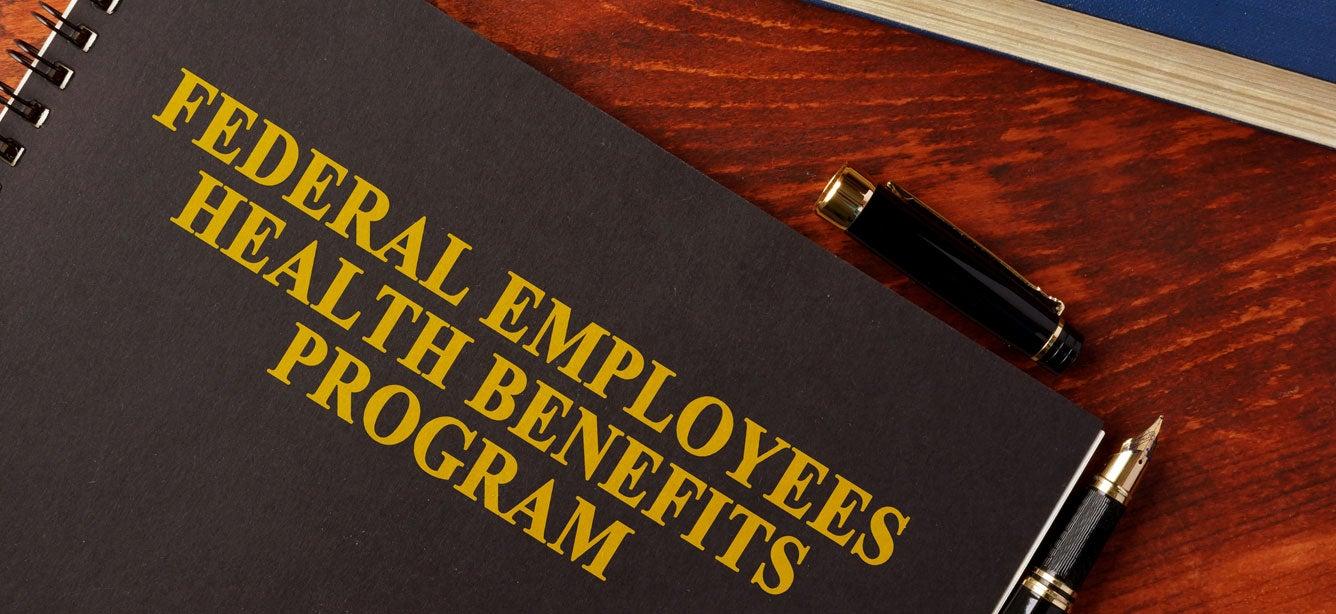
Related Topics
If you are currently working for, or have retired from, service in the federal government, you have special considerations regarding your Medicare coverage options. Learn more about how Medicare coordinates with federal employee/retiree health insurance.
What is the FICA Tax? And how does it relate to Medicare Part A?
The Federal Insurance Contributions Act, or FICA, payroll tax helps you earn credits toward Social Security, and helps to fund Medicare Part A and Social Security. Prior to 1983, federal government employees were exempt from contributing toward the Part A, or hospital insurance, portion of FICA. The Social Security Act was amended, and as of Jan. 1, 1983, federal employees were required to pay toward the Medicare Part A FICA tax.
Because of this change, most federal employees qualify for premium-free Part A, if they have enough working credits. To be entitled to premium-free Medicare Part A, you must have earned 10 years, or 40 working quarters of coverage, either through your own or through a spouse’s (including divorced or deceased) record. Those who worked for the federal government before this change took effect were grandfathered in and deemed automatically eligible for premium-free Medicare Part A.
Medicare & the Federal Employees Health Benefits Program (FEHBP)
Most federal employees participate in the Federal Employees Health Benefits Program (FEHBP), a type of federal health insurance available to non-military, federal government employees and retirees. FEHBP is administered through the Office of Personnel Management (OPM).
FEHBP and Medicare Part A
Most federal employees and retirees are eligible for premium-free Part A. You should enroll in Part A when first eligible, that is, during your Initial Enrollment Period (IEP) in the six months surrounding your 65th birthday month.
Even if you continue to work, you can and should enroll in Part A. Medicare Part A will usually pay secondary to FEHBP. Generally, Part A covers some of the costs that FEHBP may not cover such as deductibles, coinsurance, and charges that exceed the FEHBP allowable charges. However, there are a variety of FEHBP options and you will need to contact your specific FEHBP plan for specific details of coordination with Part A.
FEHBP and Medicare Part B
Whether a federal employee plans on continuing to work or retire at 65 is pivotal to the question of whether to enroll into Medicare Part B when first eligible or delay enrollment. Both scenarios are described below:
- Continuing to work with FEHBP: If you plan on continuing to work with FEHBP coverage past the age of 65, you should delay Part B enrollment until you retire or lose insurance, whichever comes first. At that time, you will be eligible for an 8-month Special Enrollment Period (SEP) to enroll in Part B. Like private sector employees, federal employees are protected from the Part B late enrollment penalty due to their current actively working and employer group health plan (EGHP) coverage status.
- Retiring with FEHBP: Once you decide to retire you must carefully consider the question of enrolling into Medicare Part B. Unlike many private sector retirees for whom retiree health insurance becomes the secondary payer after Medicare once they stop working, FEHBP retiree coverage can continue to act as a primary insurance and is as good as the coverage available to active working federal employees.
However, retiring federal employees with FEHBP should consider the following factors when deciding to delay or not enroll in Part B:
- After retirement, a Part B late enrollment penalty applies if you do not have other employer insurance coverage through an actively working spouse. The penalty is 10% of the current Part B premium for each 12 months (following their IEP) you delayed enrollment. Additionally, the retiree must wait for the annual General Enrollment Period (Jan. 1 – Mar. 31) to enroll in Part B, with coverage beginning the month afer you sign up.
- Some federal and retiree health plans waive coinsurance and deductibles after enrolling in Part B. If your FEHBP offers this coverage, it may be to your financial benefit to enroll in Part B.
- Retirees should compare the costs and benefits of paying two premiums (Part B and the FEHBP) now versus paying a Part B premium plus a late enrollment penalty should you decide to enroll later.
- While FEHBP plans have a good history of providing comprehensive insurance coverage, employer group health plans—even FEHBP—are susceptible to altering covered benefits, and increasing premiums, deductibles, and copayment amounts.
FEHBP and Medicare Advantage
Like other people with Medicare, people with FEHBP (both actively working and retirees) can enroll in a Medicare Advantage plan if they are enrolled in both Medicare Parts A and B. However, there are some important points to consider when enrolling in a Medicare Advantage plan.
First, federal retirees should take the time to understand how Part A and B benefits will be delivered through a Medicare Advantage network versus Original Medicare such as provider network limitations and referral requirements for specialists. Retirees who join a Medicare Advantage plan may suspend their FEHBP coverage, which means you only pay your Medicare Part B premium and any premium charged by the Medicare Advantage plan. Before opting to suspend FEHBP coverage, you should contact your retirement office to learn more about the process for suspending FEHBP enrollment and any limitations on FEHBP re-enrollment. Retirees are reminded to obtain written confirmation of the FEHBP suspension and re-enrollment requirements.
FEHBP and Medicare Part D
Most federal employees and retirees enrolled in FEHBP are not required to enroll into a Medicare Part D plan since all FEHB plans offer creditable prescription drug coverage, meaning it is as good as Medicare’s drug coverage. However, low-income federal retirees who are eligible for the Part D Low Income Subsidy/Extra Help should weigh the benefits of both plans; the Part D drug plan usually provides lower copayments but the FEHBP plan’s formulary is often broader with fewer restrictions.
In most cases, you will not lose your FEHBP if you enroll in Part D but know that the Part D is typically the primary payer for prescription drugs. Rules may be different for annuitants or retired federal employees who are “re-hired”. If this is your situation, you should contact your plan’s benefits administrator to learn more about the plan’s rules to avoid jeopardizing your FEHBP. If you lose your FEHBP, you can join a Part D drug plan without penalty as long as you join during a Special Enrollment Period within 63 days after losing FEHBP.
How Medicare works with TRICARE and Veterans’ Benefits
TRICARE is a health insurance program for active duty and retired military personnel and their family members. TRICARE includes several different programs. Active duty members and their families usually receive benefits under TRICARE Prime or Standard. Like actively employed individuals, enrollment into Medicare Part B can be delayed until active duty ends, and the retiree will be eligible for an 8-month Special Enrollment Period to enroll in Part B.
TRICARE for Life (TFL) is the health insurance program for military retirees and their dependent family members. People with TRICARE generally must enroll in both Medicare Parts A and B when they are first eligible. TFL wraps around Medicare and acts as the secondary payer covering Medicare deductibles and coinsurance. Beneficiaries with TFL do not need to purchase a Medigap policy. Likewise, TFL prescription coverage is credible (at least as good as) to Part D, so enrollment into Part D is not required or recommended. An exception applies if you are eligible for Extra Help, which may lower prescription drug costs.
If you happen to lose TRICARE, you can join a Part D drug plan without penalty so long as you join a drug plan within 63 days after losing TRICARE.
Note: If you have both FEHBP and TFL, you can suspend your FEHBP to use TFL. You should contact the OPM's retirement hotline at 1-888-767-6738 to request a suspension form.
The Department of Veterans Affairs (VA) provides veteran health care (and additional) benefits to individuals of all ages who served in the active military, naval, or air service and didn’t receive a dishonorable discharge. VA health care can be very comprehensive, but you must receive that care at a VA medical center or other VA location. Veterans are encouraged to enroll into Medicare when first eligible to:
- Avoid delay in obtaining Medicare coverage and the Part B late enrollment penalty.
- Provide coverage for health care obtained outside of the VA health system.
- Ensure coverage for Medicare-approved health care benefits and services. The VA does not provide a standard set of benefits and services for all veterans and your local VA facility may not provide all the services you need.
Many veterans choose to have both VA health care and Medicare. For example, some veterans use VA services to get their prescription drugs at the VA pharmacy (the VA benefit offers creditable drug coverage, which means someone can delay Medicare Part D enrollment without incurring a Part D late enrollment penalty) but have Medicare to see providers outside the VA medical centers. Keep in mind that Medicare and VA benefits generally do not work together; Medicare does not typically pay for any care provided at a VA facility and the VA does not cover services provided outside of the VA health system.




